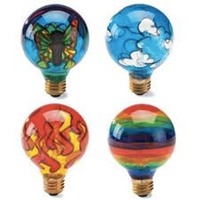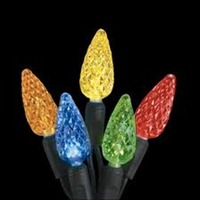What are watts? Why do we care?
The definition of a watt is 1 joule per second as the rate of energy. So when we talk about a 60 watt light bulb, the bulb is using 60 joules of energy in one hour. This is important because if you use a light bulb that uses more energy than a lamp can handle, the bulb will get too hot and start to damage the lamp shade or it has the potential to catch the shade on fire.
What light bulbs burn out?
We have all been there when we walk into a room, flip the switch on the wall and we see a flash of light and then its dark again. Why is it that lights always seem to burn out when we turn them on? The answer is actually quite simple. When we flip the swith we are sending surges of current to the bulb and over time it makes spots on the filament thinner and thinner until one day it cannot handle the amount of current passing through the filament and the tungsten breaks.
Life Span of Bulbs
Older incondescent light bulbs could burn up to 750 hours or 10 weeks if used for only 12 hours a day. Now technology lets them last up to 10,000 hours!
The Most Efficient Type of Bulb
The most efficient bulbs that one can find on the market are the full spectrum bulbs, though only about 10% of the energy that a bulb produces ia actual light the rest is heat.
The Difference Between Normal Bulbs and Tanning Bulbs
Ordinary light bulbs emit visible white light, unlike tanning bulbs. These special bulbs emit ultraviolet light rays which is why standing under the light will darken skin. This is also why tanning can cause cancer. Being exposed to to much ultraviolet light is toxic to your skin!
Christmas Lights
Outside Christmas tree lights were not introduced to the public until 1927.
Some of the earlist bulbs were the blown into shapes of fruit, flowers and holiday figures and then were hand painted.
GE was the first company to pre-wire christmas light strands. Before that time they had to be individually wired on the tree.
Pre-lit christmas trees didnt become popular until after World War II.
Old strands of lights were in a series and that is why when one burned out they all stoped working. The current was not able to be passed on once it hit the bulb that was burned out. Now they are found in a parallel fasion.


